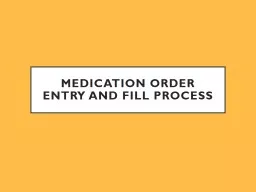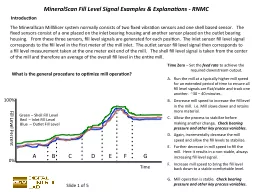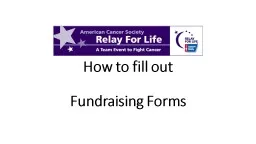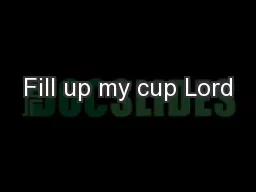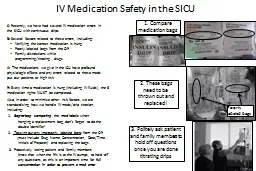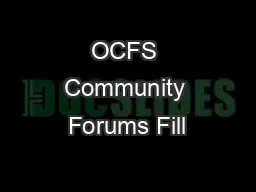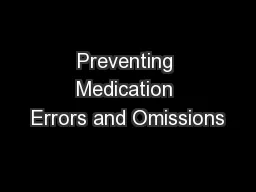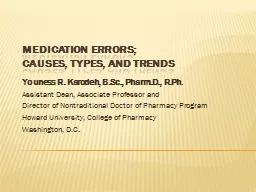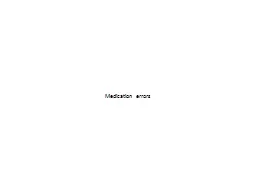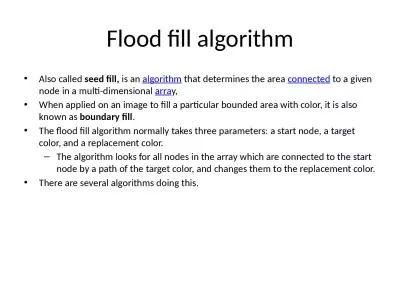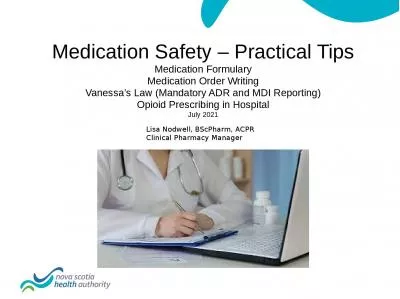PPT-Medication order entry and fill process
Author : pasty-toler | Published Date : 2018-12-06
Policies and Procedures Each pharmacy must have a policies and procedures manual Mission statement States the purpose and goals of an organization Policy A definite
Presentation Embed Code
Download Presentation
Download Presentation The PPT/PDF document "Medication order entry and fill process" is the property of its rightful owner. Permission is granted to download and print the materials on this website for personal, non-commercial use only, and to display it on your personal computer provided you do not modify the materials and that you retain all copyright notices contained in the materials. By downloading content from our website, you accept the terms of this agreement.
Medication order entry and fill process: Transcript
Policies and Procedures Each pharmacy must have a policies and procedures manual Mission statement States the purpose and goals of an organization Policy A definite course or method of action a plan establishing goals and objectives. entry area tel|mobile [0-9]+ [0-9]+ fwd free entry entry entry area tel mobile area tel mobile 03 10091729 1201 1222 free 1887 free fwd entry tel|mobile entry [0-9]+ area [0-9]+ tel|mobile [0-9]+ [0-9 Introduction. . The MineralScan . MillSlicer. system normally consists of two fixed vibration sensors and one shell based sensor. The . f. ixed sensors consist of a one placed on the inlet bearing housing and another sensor placed on the outlet bearing. Fundraising Forms. Fill out the name of the event-RFL of Kershaw County, SC. Fill out the name of your team.. Fill out the name of your Team Captain.. Fill out the phone number of the Team Captain to contact if there are questions.. Like the woman at the well I was seeking. For things that could not satisfy;. And then I heard my Savior speaking:. "Draw from my well that never shall run dry".. Fill my cup Lord, I lift it up, Lord!. S:. Recently, we have had . several IV . medication errors in the SICU with continuous drips. B:. Several factors related to these errors, including:. • Verifying the correct medication is hung. Welcome. Goals for Today. Fill. Discuss the impact of federal changes to the provision of child care services. Consider strategies to improve the child care subsidy program.. Gather input from a variety of stakeholders:. Are Key to . Keeping Kidney Patients Safe. On average, dialysis patients take 6 to 10 different medications each day.. Most dialysis patients report that they only “sometimes” discuss all of their medications with their doctor.. . Youness R. Karodeh, B.Sc., Pharm.D., R.Ph. .. Assistant Dean, Associate Professor and . Director of Nontraditional Doctor of Pharmacy Program. Howard University, College of Pharmacy. Washington, D.C. Chapter Topics. Medical errors. Medication errors. Prescription filling process in community and hospital pharmacy practices. Medication error prevention. Medication error reporting systems. Learning Objectives. Article attack! Fill in the missing articles – a, an, the – where necessary . 1. ______ time is ______ money. Article attack! Fill in the missing articles – a, an, the – where necessary PG. 1 SELF-STUDY PROGRAM Introduction Understanding how to read medication orders and drug It will also help you understand orders and instructions for any medications you or your family takes. This called . seed fill,. is an . algorithm. that determines the area . connected. to a given node in a multi-dimensional . arra. y, . When applied on an image to fill a particular bounded area with color, it is also known as . Medication Formulary. Medication Order Writing. Vanessa’s Law (Mandatory ADR and MDI Reporting). Opioid Prescribing in Hospital. July . 2021. Lisa Nodwell, . BScPharm. , ACPR. Clinical Pharmacy Manager. Medication Administration. Policies. Upon Admission. MUSTS. Document patient’s Height, Weight, and Allergies. Document weight in Kg. Reconcile patient medications. the physician must reconcile all medications and address deficiencies /...
Download Document
Here is the link to download the presentation.
"Medication order entry and fill process"The content belongs to its owner. You may download and print it for personal use, without modification, and keep all copyright notices. By downloading, you agree to these terms.
Related Documents

